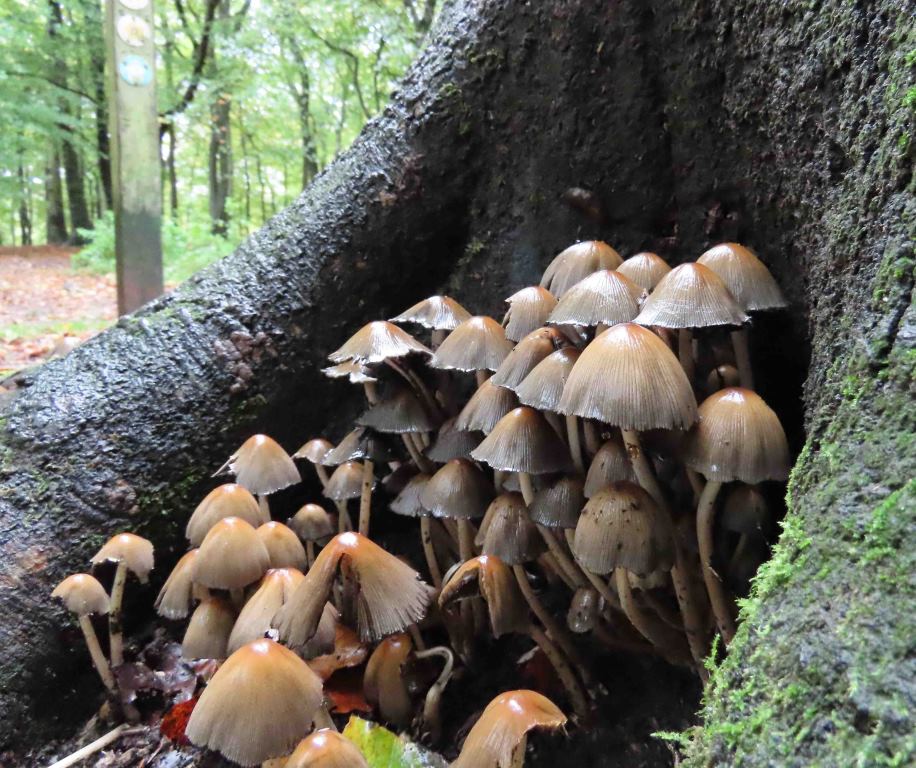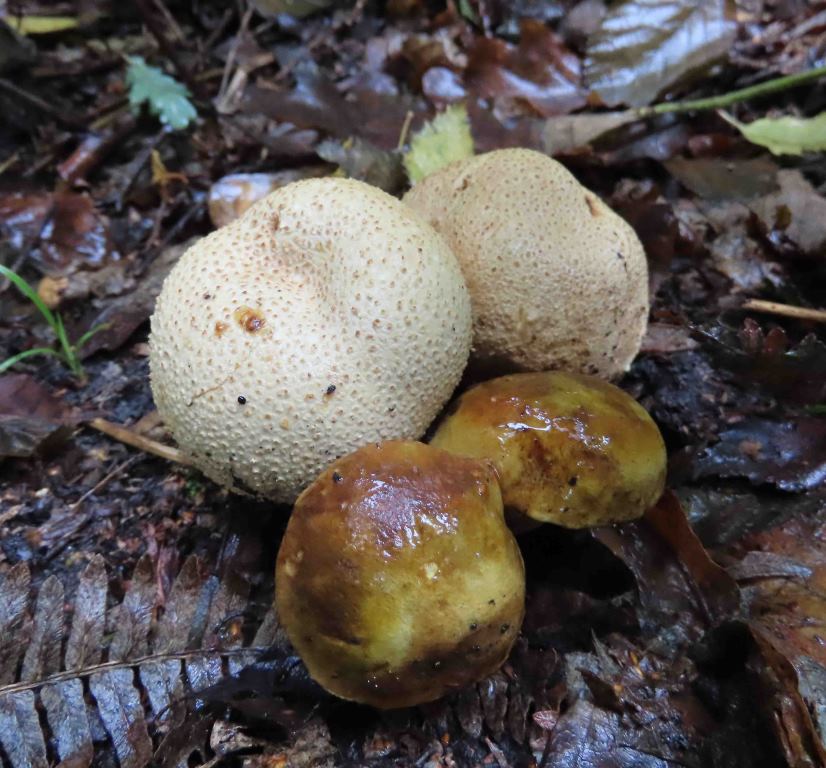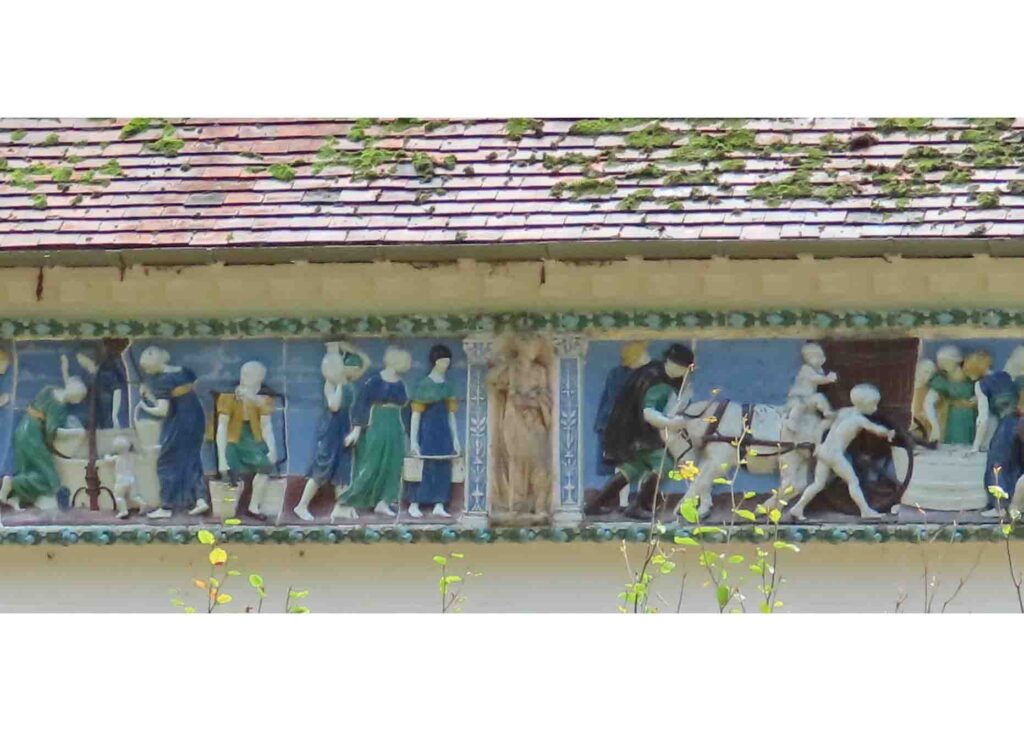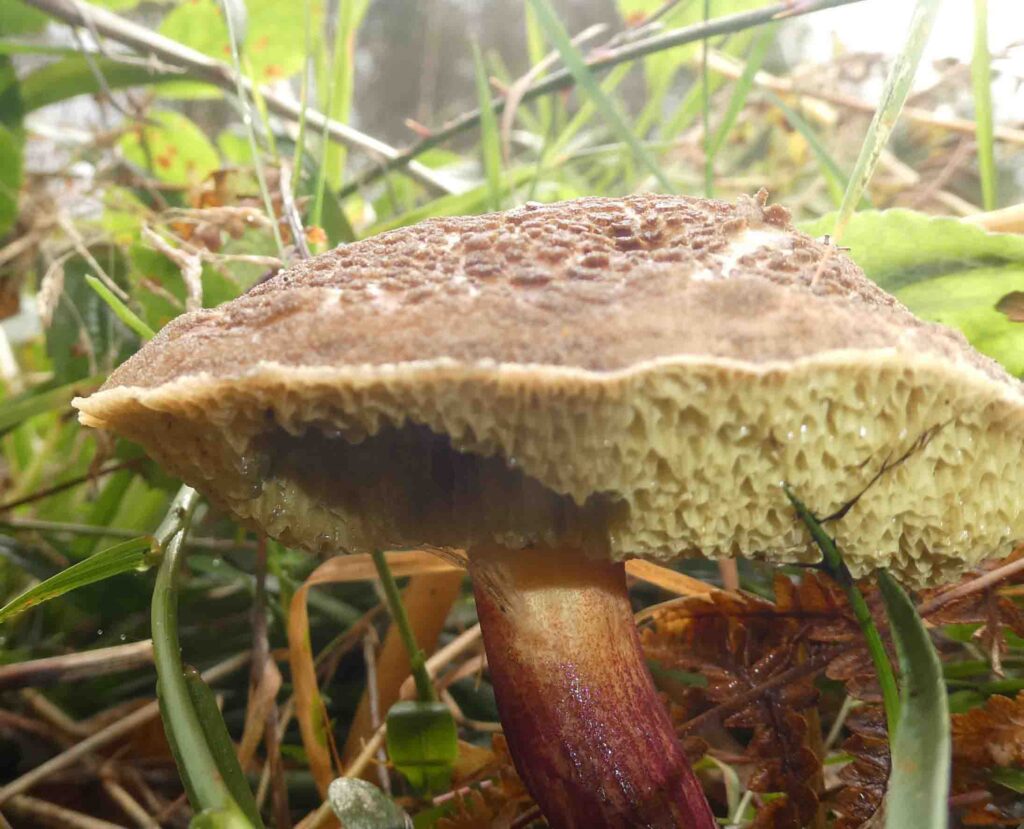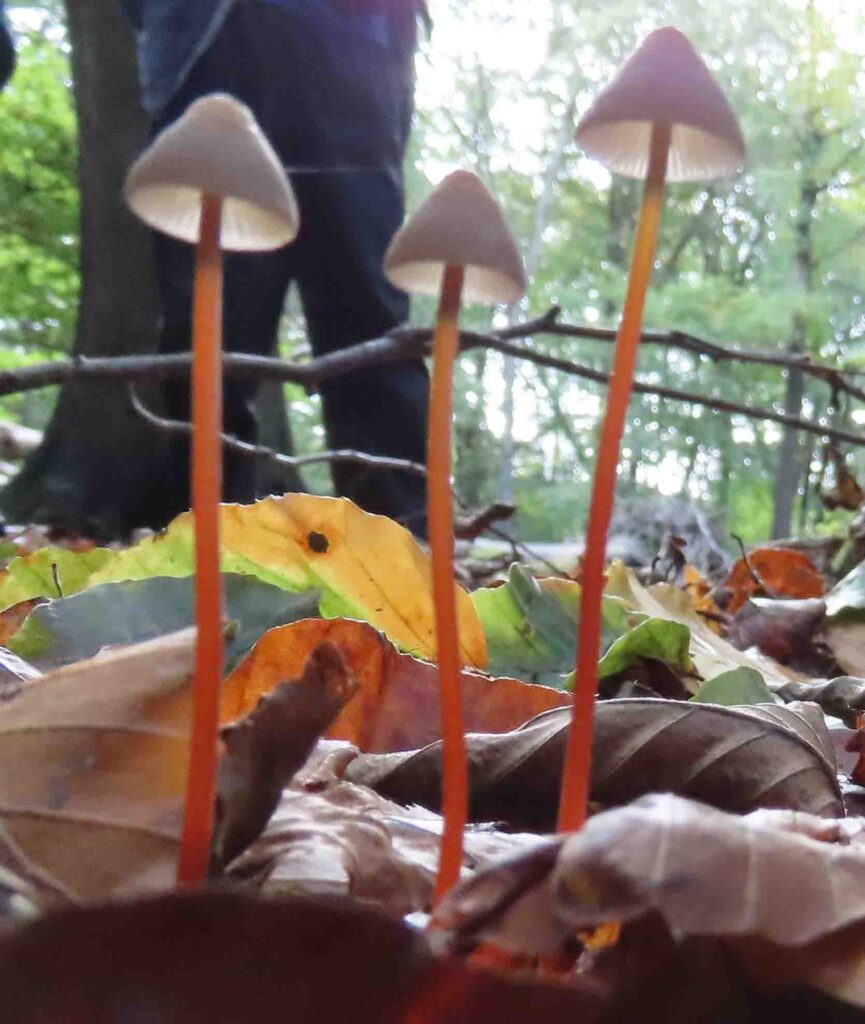Inge Beck led a walk at Marlow Common on the morning of Wednesday 20 October. Meeting place was the junction of the Chiltern Way and a minor road across the Common. A tree stump by the car park was covered with Glistening Inkcaps, while across the road, a Cep was spotted and a Shrew darted into a hole in a stump. The walk started out across the north-west corner of Pullingshill Wood, which is owned by the Woodland Trust. The next section of the route was through Marlow Common North, which is managed by the Chiltern Society. A pale yellow flower of Small Balsam was noted near the entrance to the wood. The track led to a grassy clearing where Heather is being encouraged to spread. A tree stump here was covered with pale green Cladonia lichens, together with the Jelly Rot fungus. This part of the Common was formerly open heathland but is now mainly covered by Oak and Birch woodland. Continuing along a track across the Common, an unusual find was Parasitic Bolete, growing with Common Earthball. The track led to a large clay pit which formerly supplied materials for the local brick and tile industry. Several large specimens of the Purple Brittlegill were found here. Not far away, another grassy clearing had more Heather and a Sweet Chestnut tree, with a Mirabelle Plum tree nearby. Continuing along the track, Fly Agaric fungi were found growing under Birch. After crossing a lane, the route led back onto Marlow Common and past Monks Corner, an Arts and Crafts style house which was built for Conrad Dressler, a sculptor and the producer of Medmenham Ware. Glazed terracotta panels decorate the side of the house and there is an unusual metal weather vane in the shape of a ship. Jerome K. Jerome lived at Monks Corner for about 10 years. The track led to the large wood bank which separates Greater Marlow from Medmenham. A number of purple Amethyst Deceiver fungi were found in the ditch beside the bank. This part of the walk was through Beech woodland. The sun came out and the fallen leaves, sparkling after overnight rain, gleamed in the sunlight. Most of the leaves in the canopy were still green. This section of the route followed the Chiltern Way as it led into the privately-owned Davenport Wood, where there were a lot of young Beech trees. The next footpath turned back towards Marlow Common, and then on to Hollowhill Wood, which is managed, together with Hog Wood, by BBOWT. It forms part of the Hollowhill and Pullingshill Woods SSSI. Most of Hollowhill Wood is covered with Beech woodland. At the top part of the site, where a former conifer plantation was clear-felled, a number of acid-loving plants have germinated from dormant seed, indicating that this part of the wood was formerly open heathland. A search in a clearing here revealed Heath Speedwell, Slender St John’s-wort and Pill Sedge, plus several specimens of Red Cracking Bolete. The walk continued back through Beech woodland on the top of the plateau. The stem of a specimen of Saffrondrop Bonnet exuded drops of a yellow-staining liquid. The wood extended westwards down the steep sides of a dry valley, but the route kept to the plateau at the top. Next, several specimens of Magpie Inkcap were found. The final section of the walk was back through Pullingshill Wood, where there are 1400 metres of First World War trenches. These were originally 2 metres deep and wide and built in a zig-zag arrangement. This section of wood was formerly open heathland but is now mainly covered in Birches. Afterwards, most of the walkers went to The Old Belle at Hurley for lunch and heavy showers, which had been threatened by the weather forecast for earlier in the day, finally arrived.
Pictures by Fiona Brown and Jim Wills

